Dear Sir or Madam, we are writing to inform you of some tips you might find useful for teaching letter writing in KS2. In addition, we have some specially created formal letter writing resources that you might find interesting...
Of all the genres of texts we need to teach, the formal letter is probably the most prescriptive. And with good reason. First impressions count, and it can be very counter-productive to send a letter that distracts either because you haven't followed layout conventions or the language does not meet expectations.
Here are some ideas for making sure that your pupils have a sound working knowledge of this text type.
Why teach KS2 children formal letter writing?
At first, it might seem rather odd to teach KS2 children how to write a business letter or something in a similar formal style. For a start, what on earth are they likely to be writing to businesses about?
Secondly, as we all well know, we conduct most interactions with organisations these days by email, automated telephone helplines or online forms.
Nevertheless, there are still occasions when letter writing is necessary, such as a complaint or the cover letter for a job application.
There might even be the need to include an air of formality within a more informal letter, such as a thank you letter, perhaps to an older relative.
Furthermore, businesses still write letters to their customers. One day, hopefully, our pupils will have jobs, some of which will require them to send well-written formal letters.
Most importantly, perhaps, is that letter writing is an excellent exercise in writing for a purpose in KS2. It also has the added benefit of helping pupils to learn how to use formal language.
Example of a formal letter
First, you need to expose pupils to a range of good examples of formal letters. We've got some great model text versions, specially written for teaching purposes.
This two-week Year 5 writing unit is based on a model formal letter from a headteacher, helping pupils learn how to structure and write formal letters using appropriate vocabulary, modal verbs and adverbs of possibility to create a formal tone.
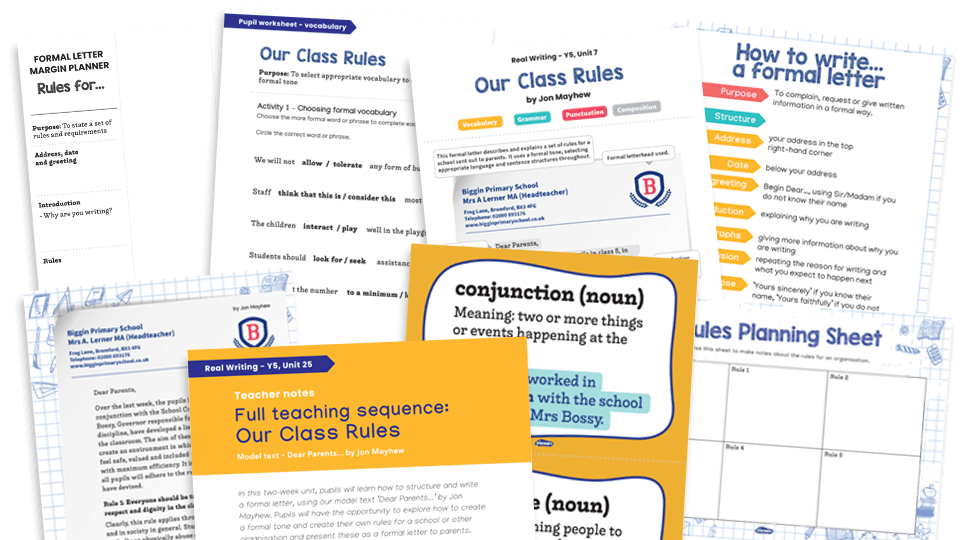
Meanwhile, this Year 6 writing unit helps pupils develop formal tone, use the subjunctive form and apply key grammar and vocabulary skills to write their own structured formal letters.
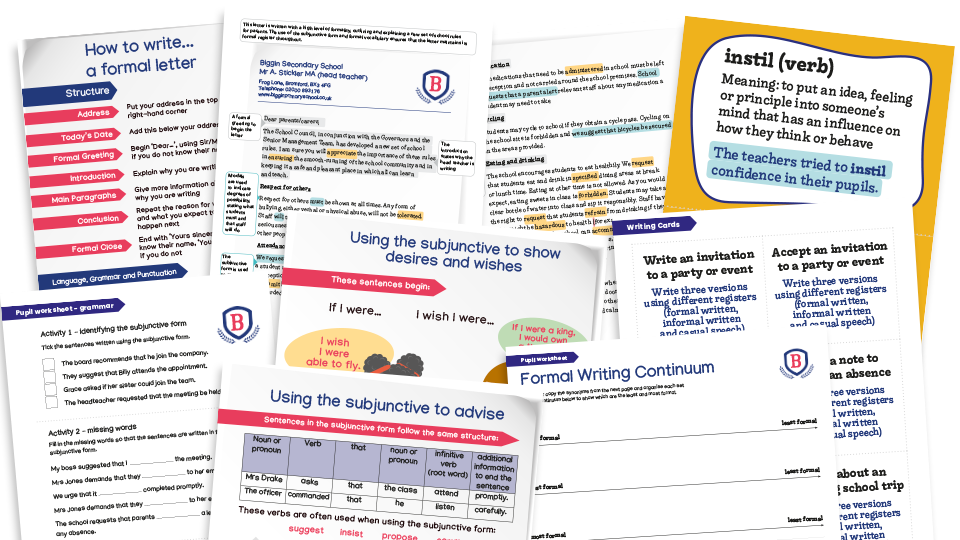
This KS2 formal letter writing pack guides pupils through writing job application letters using model texts, planning templates and success criteria.
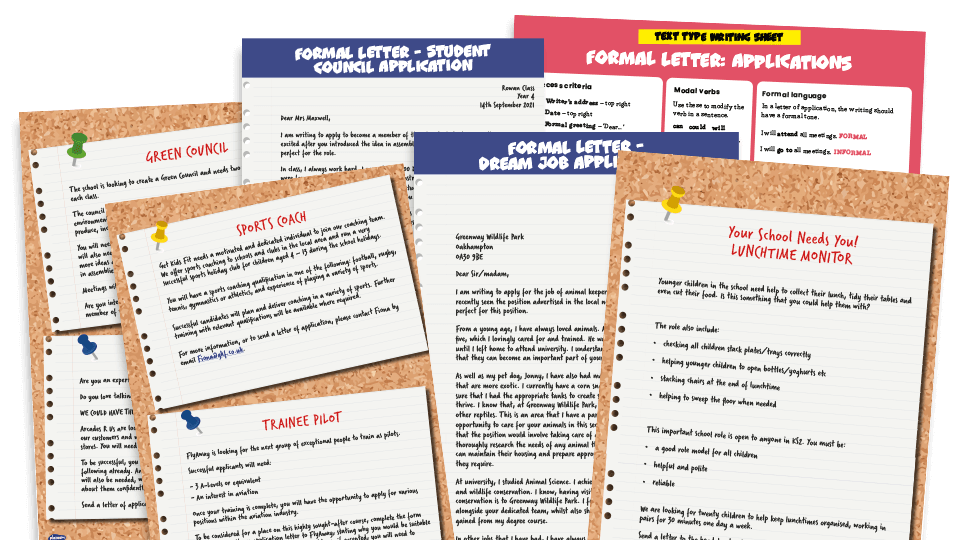
Real-world examples
It's also helpful for pupils to see real-world examples, although you might want to block out any sensitive information, such as your own contact details.
Real-world examples will also help to show the layout conventions. Be warned, however: graphic designers have a habit of taking liberties with accepted norms, especially when it comes to corporate letterheads.
Be ready to explain that to your class if the various elements are not where you say they should be.
Formal letter format and layout
Knowing how to write a formal letter starts with figuring out how to organise the different elements on the page.
So, what is the correct format for a formal letter?
The sender’s address should be in the top, right-hand corner. The date should appear just below that. Unlike informal versions, formal letters should have the recipient’s address on the left-hand side, above the salutation, and starting on the same line as the date.
The format can seem a bit weird for children to get their heads around so why not make it a game? Turn it into a sort of jigsaw activity, either on a smart board or using cardboard cut-outs, whereby children need to arrange all the elements – date, sender’s address, recipient’s address, etc – in the correct place on the page.
This flexible letter-writing resource pack includes planning sheets and templates to help pupils organise ideas and correctly structure letters for a range of purposes and audiences.
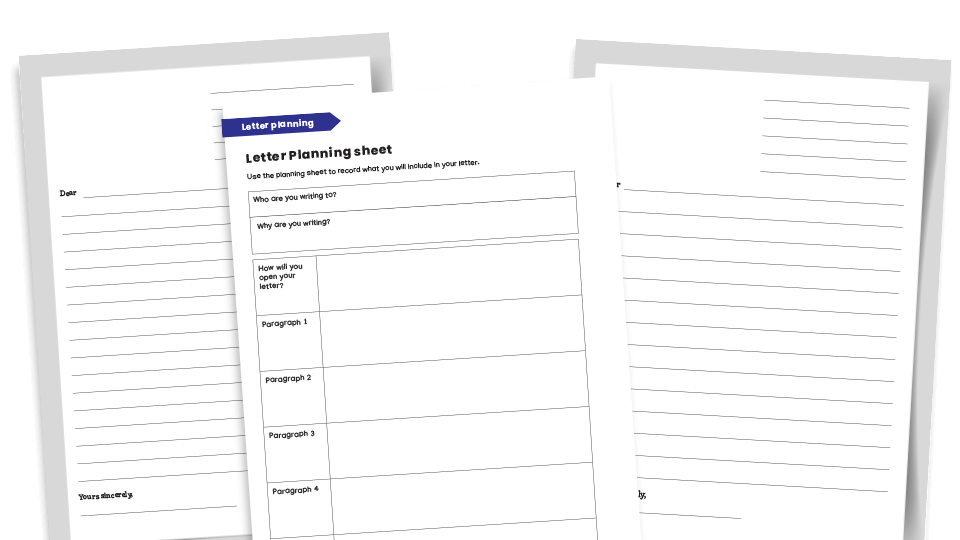
Formal greeting and sign-off
There are also conventions with how formal letters begin (the salutation) and the sign-off. Emphasise the need for respectful forms like Dear Ms Smith or Dear Mr Jones. Dear Sir or Madam is acceptable if the name of the addressee is unknown. The use of first names is usually inappropriate, as is any greeting other than Dear ...
The wording of the sign-off is equally important. Use “Yours sincerely” if you know the name of the recipient. If not, the correct sign-off is “Yours faithfully”.
Formal language
As was stated earlier, one of the best things about letter writing is that it gives pupils a meaningful context for practising formal writing.
This could include everything from using precise, technical vocabulary to the passive voice, subjunctive verb forms and the avoidance of contractions. Be aware, however, that those are KS2 objectives and, in the case of the subjunctive mood at least, UKS2.
To make sure that your class is well versed in the niceties of formal language, why not try them out on our Year 6 SPaG Challenge Mat for Formal and Informal Writing? These bright and appealing resources help pupils to understand formal writing, then challenge, test, explain and apply their skills.
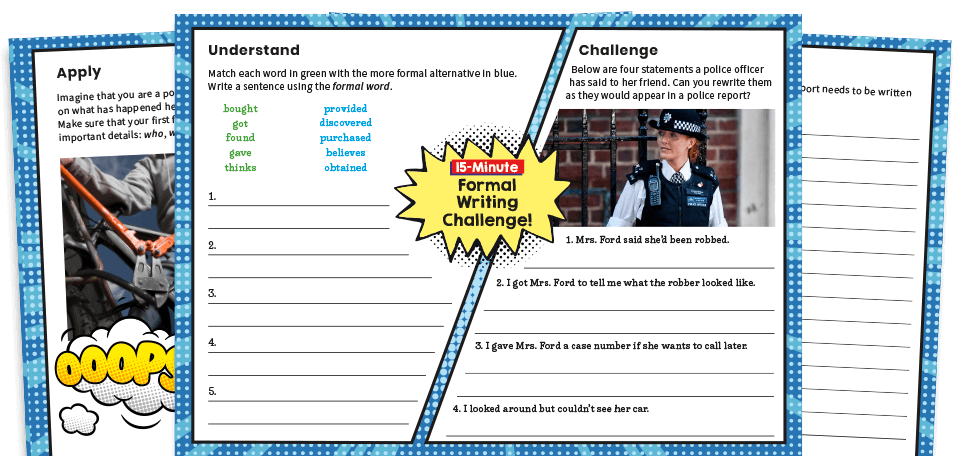
Start formal letter writing early
Just because some of the technicalities are taught further up the school, that doesn’t mean you can’t start pupils young on the idea of writing formal letters.
What matters here is choosing an appropriate context. We have a Year 2 Formal Letter Writing pack that addresses that issue for you in an interesting, cross-curricular way.
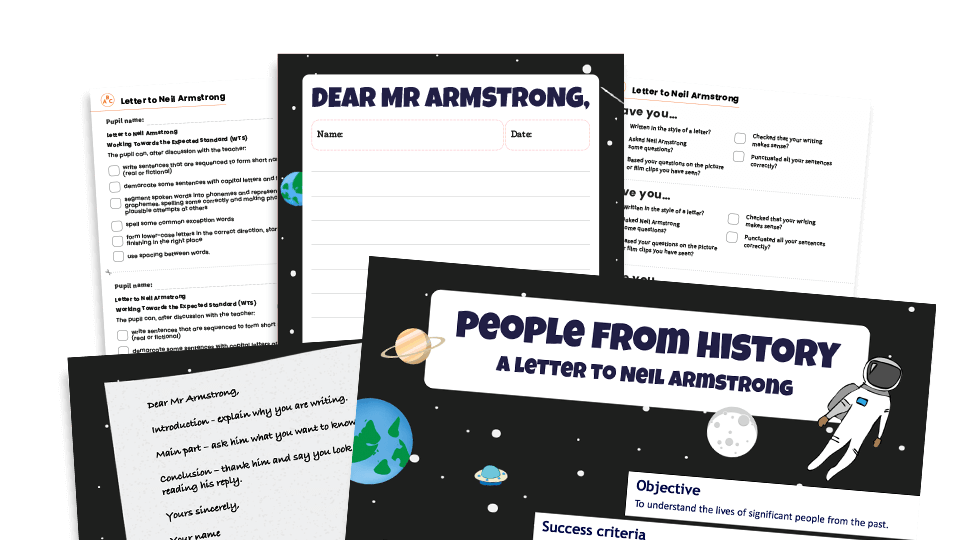
The resource builds towards pupils writing a letter to Neil Armstrong, which is bound to catch their imagination.
What might catch your eye as a teacher is the way it is geared towards creating a piece of writing for assessment purposes as it comes complete with Year 2 writing checklists that fit with Teacher Assessment Framework statements.
Alternatively, why not treat your Early Years and KS1 classes to our fully planned unit that uses Paddington Bear as the stimulus for learning the art of letter writing? Marmalade sandwiches all round!
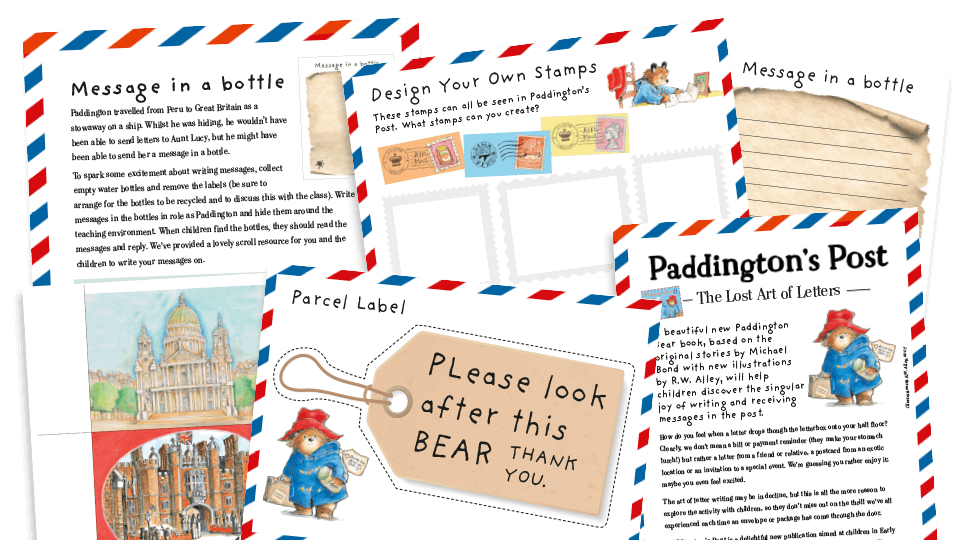
We trust that this has furnished you with an adequate supply of ideas for enhancing your pupils’ formal letter-writing skills. If there is anything else you would like help with, please don’t hesitate to explore our full range of resources.
Yours faithfully,
Us
Sue Drury qualified as a primary teacher in 1999. Teaching pupils from Year 1 to Year 8, she has held a variety of positions including maths and English subject leader, year leader, and assistant headteacher. Sue has mentored students and NQTs, offering guidance and advice using her years of experience. She created many of Plazoom's literacy resources.